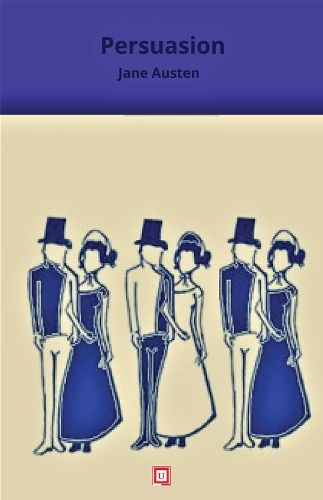Readings Newsletter
Become a Readings Member to make your shopping experience even easier.
Sign in or sign up for free!
You’re not far away from qualifying for FREE standard shipping within Australia
You’ve qualified for FREE standard shipping within Australia
The cart is loading…






This title is printed to order. This book may have been self-published. If so, we cannot guarantee the quality of the content. In the main most books will have gone through the editing process however some may not. We therefore suggest that you be aware of this before ordering this book. If in doubt check either the author or publisher’s details as we are unable to accept any returns unless they are faulty. Please contact us if you have any questions.
Persuasion is among Jane Austen’s most historically grounded works.
Like many people in Britain, Jane Austen and her family followed the ups and downs of the British war effort on both land and sea.
As was the case with Sense and Sensibility and Pride and Prejudice before it, one of Austen’s aims in Persuasion is to present a message about British society through contrasting pairs: in this case, aristocratic vanity versus the private and public utility of the navy.
Having drawn this critical picture of a vain aristocratic class, Austen uses the knowledge she gained through her family’s wartime experiences to create an alternative image of Britain: a navy whose men and women are useful to one another, society, and the national war effort.
As useful as Austen’s naval characters are, despite whatever challenges they might face in the service, when the novel’s crisis comes at the end of the first volume, it is another character altogether who proves their value: Anne Elliot.
On one level, Anne Elliot’s story reinforces Austen’s critique of the class-based society of her time. But Persuasion’s resolution is more complex than such a summary of social and financial calculation might suggest. It would be a drearily didactic book were that not the case. Instead, it is the interiority of the plot–how much of it occurs in Anne’s head and is viewed from her often-limited perspective–that maintains our interest to the end. How Austen achieves this, while addressing both the insidious and beneficial impacts of the art of persuasion, deserves our attention.
(from Introduction by Todd Webb)
$9.00 standard shipping within Australia
FREE standard shipping within Australia for orders over $100.00
Express & International shipping calculated at checkout
This title is printed to order. This book may have been self-published. If so, we cannot guarantee the quality of the content. In the main most books will have gone through the editing process however some may not. We therefore suggest that you be aware of this before ordering this book. If in doubt check either the author or publisher’s details as we are unable to accept any returns unless they are faulty. Please contact us if you have any questions.
Persuasion is among Jane Austen’s most historically grounded works.
Like many people in Britain, Jane Austen and her family followed the ups and downs of the British war effort on both land and sea.
As was the case with Sense and Sensibility and Pride and Prejudice before it, one of Austen’s aims in Persuasion is to present a message about British society through contrasting pairs: in this case, aristocratic vanity versus the private and public utility of the navy.
Having drawn this critical picture of a vain aristocratic class, Austen uses the knowledge she gained through her family’s wartime experiences to create an alternative image of Britain: a navy whose men and women are useful to one another, society, and the national war effort.
As useful as Austen’s naval characters are, despite whatever challenges they might face in the service, when the novel’s crisis comes at the end of the first volume, it is another character altogether who proves their value: Anne Elliot.
On one level, Anne Elliot’s story reinforces Austen’s critique of the class-based society of her time. But Persuasion’s resolution is more complex than such a summary of social and financial calculation might suggest. It would be a drearily didactic book were that not the case. Instead, it is the interiority of the plot–how much of it occurs in Anne’s head and is viewed from her often-limited perspective–that maintains our interest to the end. How Austen achieves this, while addressing both the insidious and beneficial impacts of the art of persuasion, deserves our attention.
(from Introduction by Todd Webb)